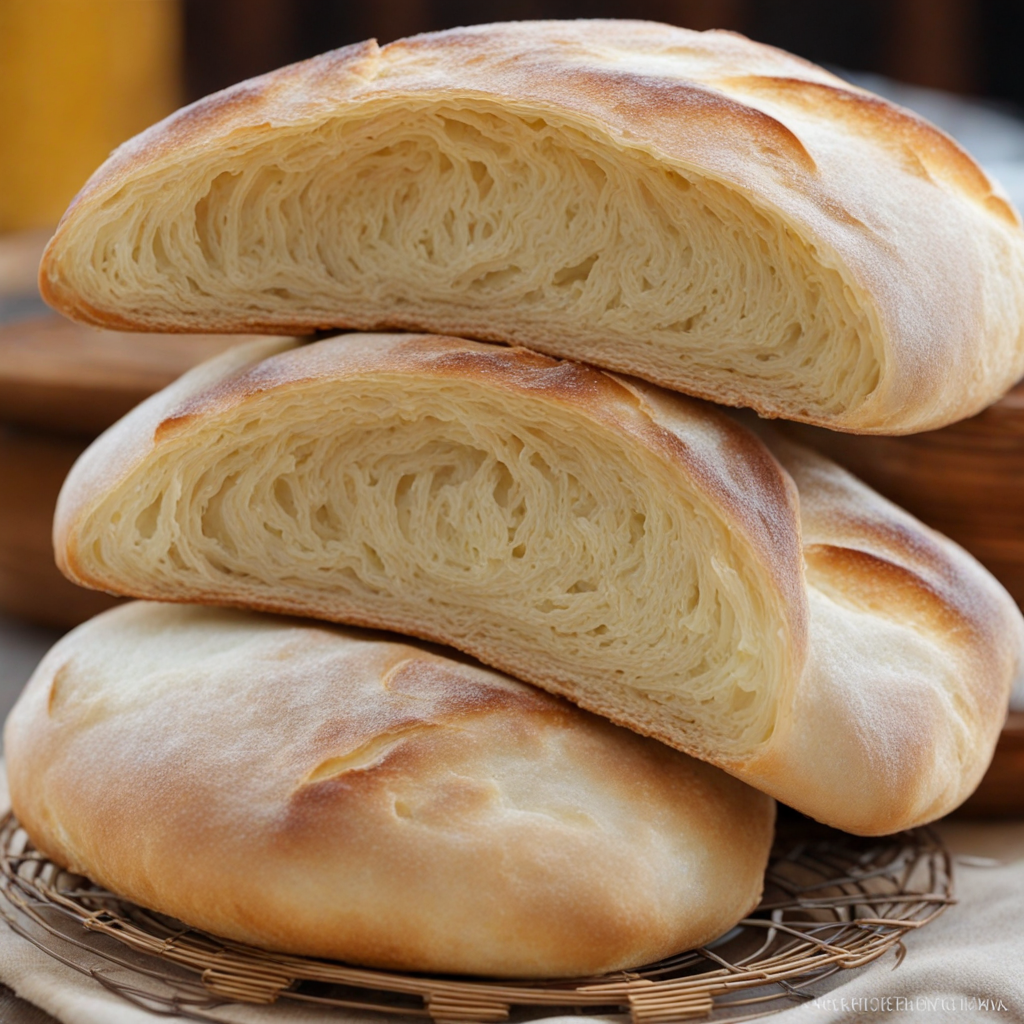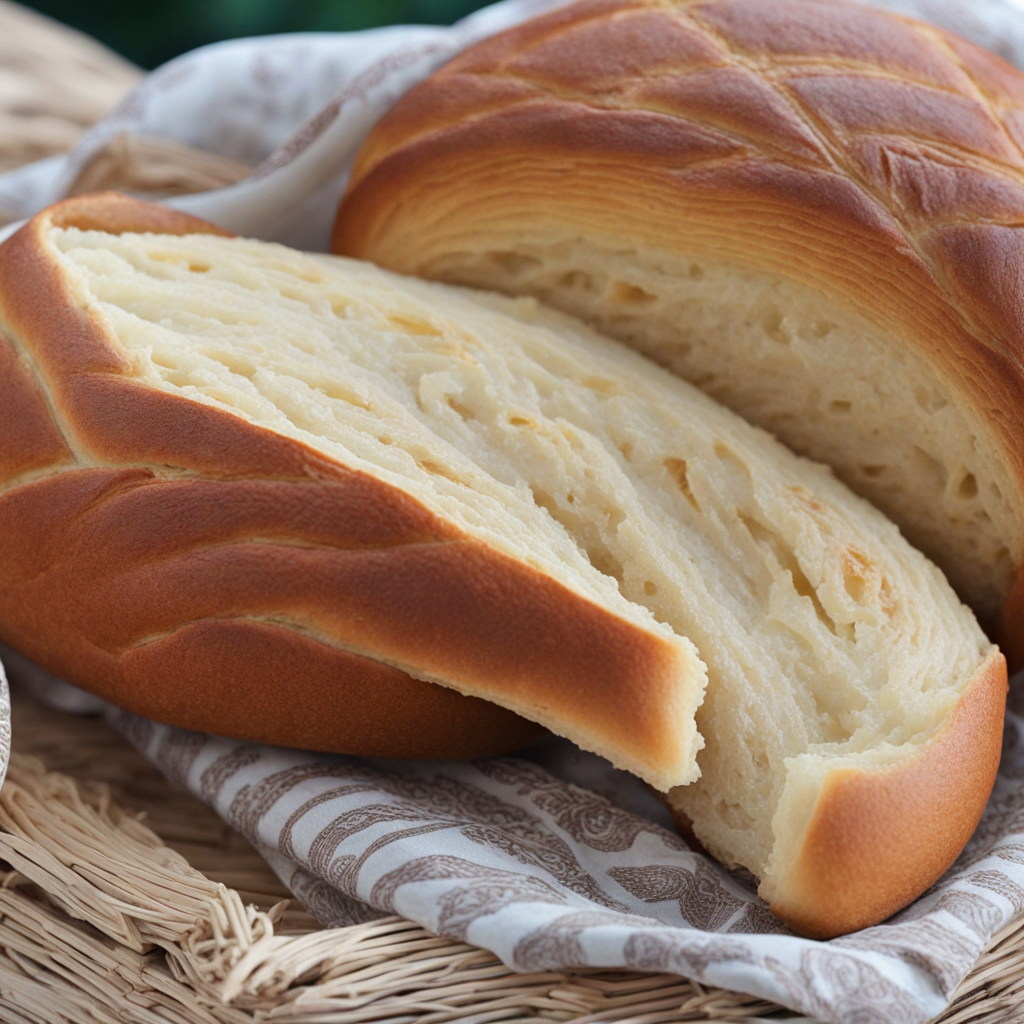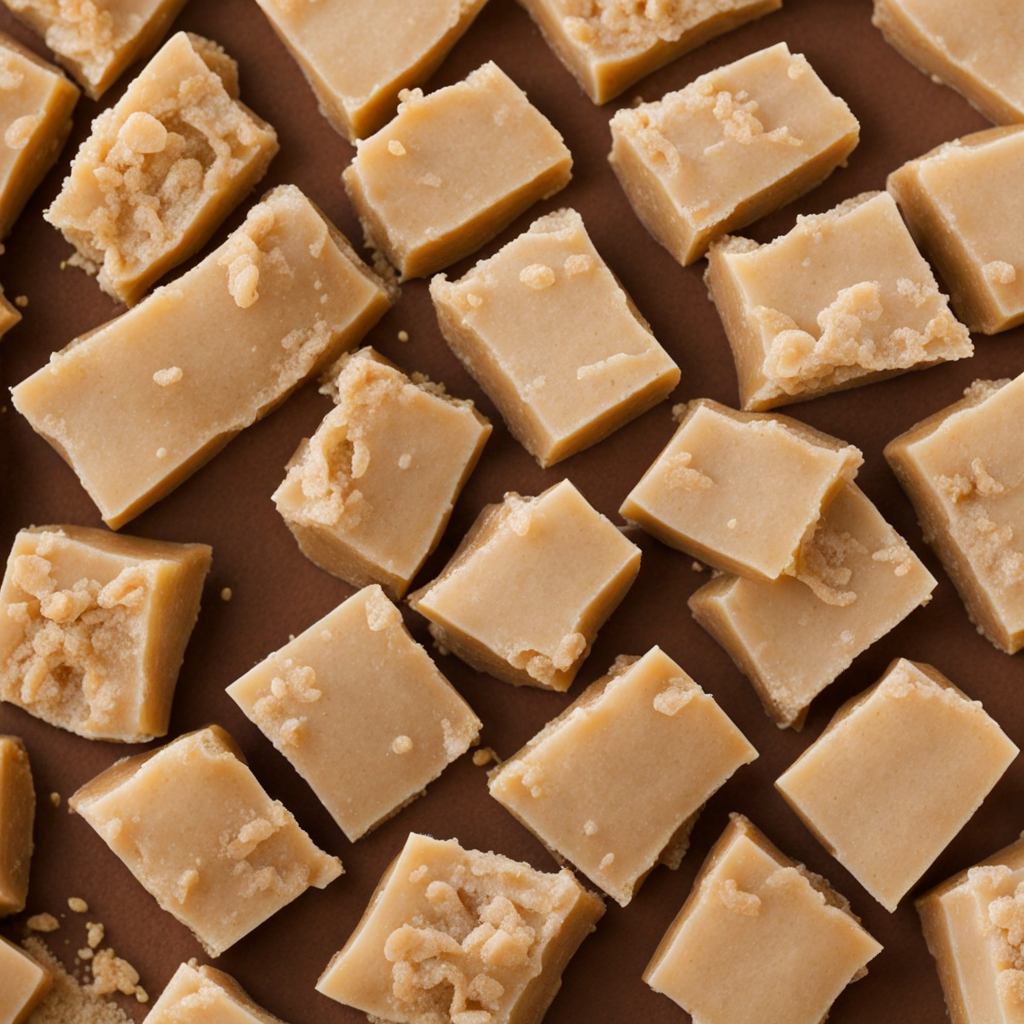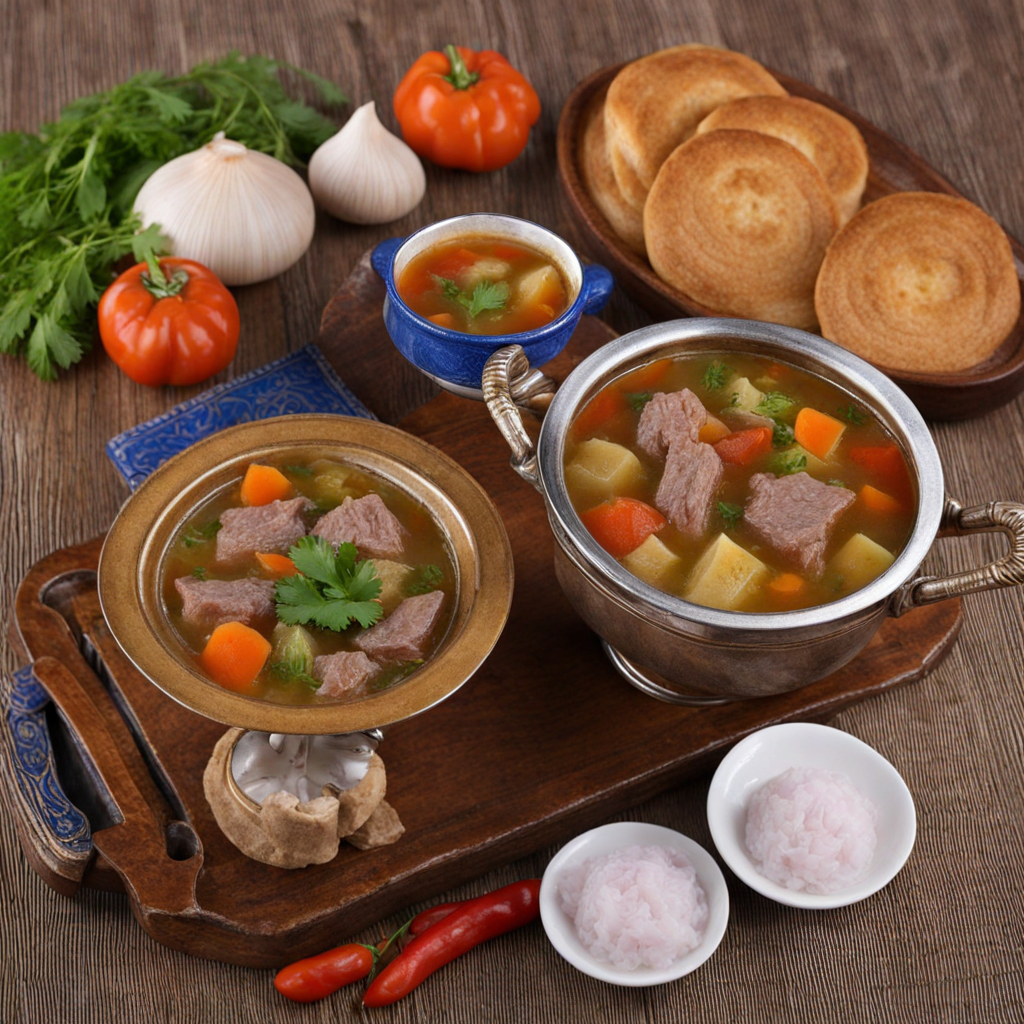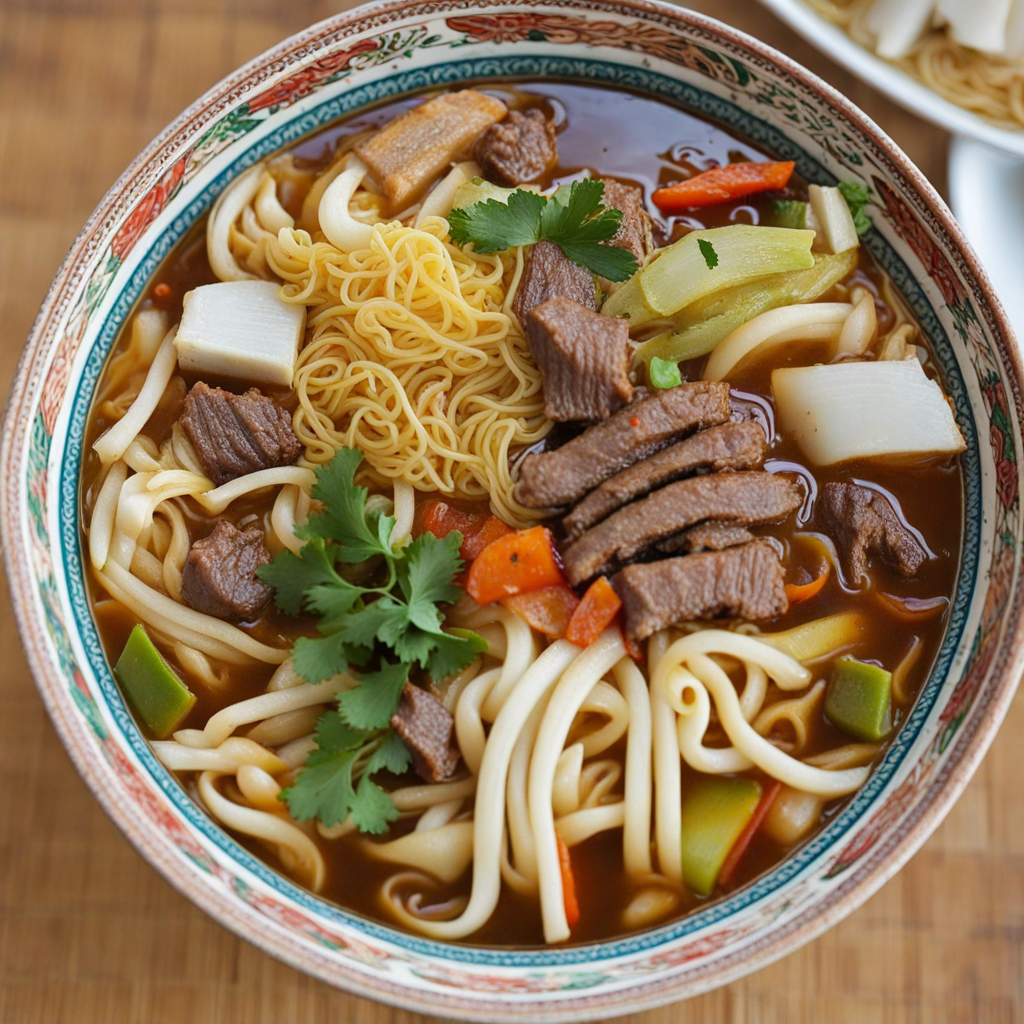Quymoq
Quymoq is a delightful Uzbek dish that showcases the rich culinary traditions of Uzbekistan, characterized by its unique blend of flavors and textures. This dish primarily consists of a soft, fluffy dough that is filled with a delicious mixture of ingredients, typically including meat, onions, and spices. The dough is often made from flour, water, and salt, which is kneaded and allowed to rest before being rolled out and filled. The filling varies depending on regional preferences, but it usually features tender pieces of lamb or beef, sautéed onions, and an array of spices such as cumin and black pepper that enhance the overall taste profile. Once assembled, Quymoq is usually cooked in a traditional tandoor or oven, resulting in a beautifully golden-brown exterior that encases the savory filling. The cooking process allows the flavors to meld together, creating a satisfying dish that is both hearty and comforting. The finished product has a distinct aroma that wafts through the air, inviting food lovers to indulge in this unique culinary experience. The crispy outer layer contrasts wonderfully with the tender and juicy filling, making each bite an explosion of flavor. Quymoq is often served with a side of fresh herbs, pickled vegetables, or a tangy yogurt sauce that complements its rich flavors. This dish is not only a staple in Uzbek households but also a favorite among travelers seeking to explore the diverse tastes of Central Asian cuisine. Enjoying Quymoq is an opportunity to dive into the heart of Uzbek culture, where food is a central part of social gatherings and celebrations, making it a must-try for anyone looking to discover new and exciting flavors.
How It Became This Dish
The Culinary Journey of Қуймоқ: A Taste of Uzbekistan Origin and Etymology Қуймоқ, pronounced as "quymok," is a traditional dish that holds a special place in the heart of Uzbek cuisine. The name itself derives from the Uzbek word "quymaq," which translates to "to pour" or "to flow," reflecting the dish's preparation method. This culinary delight is essentially a type of flatbread or pancake, made from a simple batter of flour, water, and sometimes milk or eggs. The origins of Қуймоқ can be traced back to the nomadic lifestyles of Central Asian peoples, who relied heavily on agrarian practices and livestock. As they moved across the vast steppes, they developed portable and easy-to-make food that could sustain them on their journeys. Over centuries, the recipe for Қуймоқ evolved, integrating local ingredients and flavors, influenced by the diverse cultures that passed through the region along the Silk Road. Cultural Significance In Uzbekistan, food is not just a means of sustenance; it is a crucial element of cultural identity and social connections. The preparation and sharing of meals are deeply intertwined with family traditions, hospitality, and celebration. Қуймоқ, often served during family gatherings, weddings, and national holidays, embodies this spirit of togetherness. It is common for families to gather in the kitchen to prepare the dish, fostering bonds and creating cherished memories. Additionally, Қуймоқ holds a symbolic significance in Uzbek culture. The act of preparing and sharing food is seen as a way to honor guests and strengthen community ties. In many Uzbek households, serving a freshly made Қуймоқ to visitors is a sign of respect and hospitality. Ingredients and Preparation The fundamental ingredients of Қуймоқ are simple: flour, water, and salt, with variations that may include milk and eggs for a richer flavor. The preparation begins by mixing the dry ingredients and gradually adding liquid until a smooth batter forms. The batter is then poured onto a hot, greased skillet or tandoor, where it cooks until golden brown on both sides. Traditionally, the cooking method can vary based on region. In rural areas, many cooks prefer to use a tandoor, an ancient clay oven that imparts a unique smoky flavor to the bread. In urban settings, stoves and frying pans are more common. Regardless of the method, the result is a deliciously soft and slightly chewy pancake that pairs beautifully with a variety of accompaniments. Culinary Variations As with many traditional dishes, there are numerous regional variations of Қуймоқ throughout Uzbekistan. In the Fergana Valley, for example, it may be made thicker and served with rich fillings such as cheese or seasoned vegetables. In contrast, in the Samarkand region, it may be prepared as a thinner crepe and enjoyed with sweet toppings like jams or honey. The versatility of Қуймоқ allows it to be enjoyed at any time of the day. It can be served as a breakfast item, a snack, or as part of a larger meal. In some households, it is common to pair Қуймоқ with traditional Uzbek dishes such as plov (a rice pilaf) or shashlik (grilled meat skewers), showcasing its adaptability within the cuisine. Development Over Time The evolution of Қуймоқ reflects broader changes in Uzbek society and culinary practices. With the introduction of modern cooking appliances and techniques, the traditional methods of preparation have been adapted, making the dish more accessible to a contemporary audience. However, despite these changes, the essence of the dish remains intact, rooted in its historical and cultural significance. In recent years, there has been a resurgence of interest in traditional Uzbek cuisine, both within Uzbekistan and abroad. This revival has led to a renewed appreciation for dishes like Қуймоқ, with chefs experimenting with flavors and presentations while still honoring the dish's heritage. Food festivals and culinary events have also played a role in promoting traditional recipes, allowing chefs and home cooks to share their interpretations of this beloved dish. Moreover, globalization has introduced new ingredients and culinary techniques, leading to creative fusions that incorporate influences from other cuisines. For instance, some cooks have begun to experiment with gluten-free flours or incorporate spices from neighboring regions, adding new dimensions to the traditional recipe. This adaptability ensures that Қуймоқ remains a relevant and cherished part of the Uzbek culinary landscape. Modern-Day Significance Today, Қуймоқ continues to be a staple in Uzbek households and restaurants, representing the warmth and hospitality of Uzbek culture. It is often featured on menus as a comfort food, resonating with both locals and tourists eager to experience authentic Uzbek flavors. In the age of social media, the visual appeal of this dish has also captured the attention of food enthusiasts worldwide, contributing to its popularity beyond Uzbekistan's borders. Furthermore, with the rise of culinary tourism, travelers seeking to explore the rich tapestry of Uzbek cuisine often include a cooking class focused on making Қуймоқ as part of their itinerary. This not only helps preserve the traditional practices associated with the dish but also fosters cultural exchange and understanding. Conclusion In summary, Қуймоқ is more than just a food item; it is a reflection of Uzbekistan's rich history, cultural identity, and evolving culinary practices. From its humble beginnings as a staple for nomadic tribes to its place in modern Uzbek cuisine, this dish embodies the spirit of community, hospitality, and tradition. As it continues to develop and adapt over time, Қуймоқ remains a beloved symbol of Uzbek culture, inviting everyone to share in its delightful flavors and the stories it carries.
You may like
Discover local flavors from Uzbekistan


